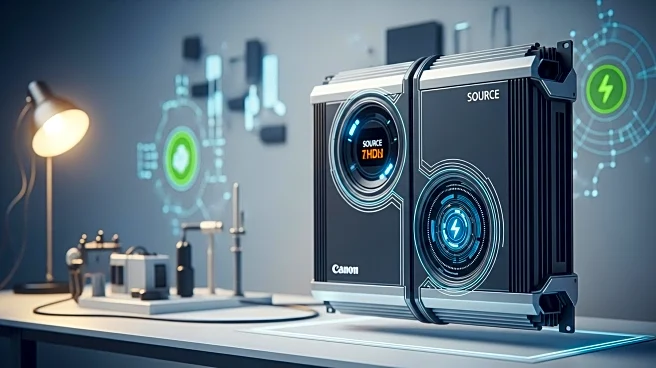What is the story about?
What's Happening?
A new dual-source 17/25-level ANPC inverter design has been proposed to address challenges in multilevel inverter technologies used in renewable energy systems, electric vehicles, and industrial drives. This design aims to reduce device stress and part count while maintaining high efficiency and output quality. Traditional multilevel inverters often suffer from high component counts and complex voltage balancing requirements, which increase costs and reduce reliability. The proposed inverter architecture utilizes asymmetric input voltage ratios to generate up to 25 voltage levels, ensuring superior waveform quality and reduced total harmonic distortion (THD). The design eliminates the need for an H-bridge, reducing voltage stress and allowing for the use of lower-rated semiconductor devices.
Why It's Important?
The advancement in inverter technology is crucial for the growing demand for efficient power conversion in hybrid energy systems. By reducing component count and device stress, the new inverter design offers a cost-effective solution that enhances reliability and efficiency. This is particularly important in renewable energy applications where compactness and performance are critical. The ability to generate multiple voltage levels with fewer components can lead to significant cost savings and improved power quality, benefiting industries and consumers alike.
What's Next?
The proposed inverter design will undergo further validation through experimental results, including efficiency analysis and THD performance. The flexibility to choose between 17 and 25 output levels without additional components allows for customization based on specific application needs. This adaptability could lead to widespread adoption in various sectors, driving innovation in power conversion technologies.
AI Generated Content
Do you find this article useful?
















